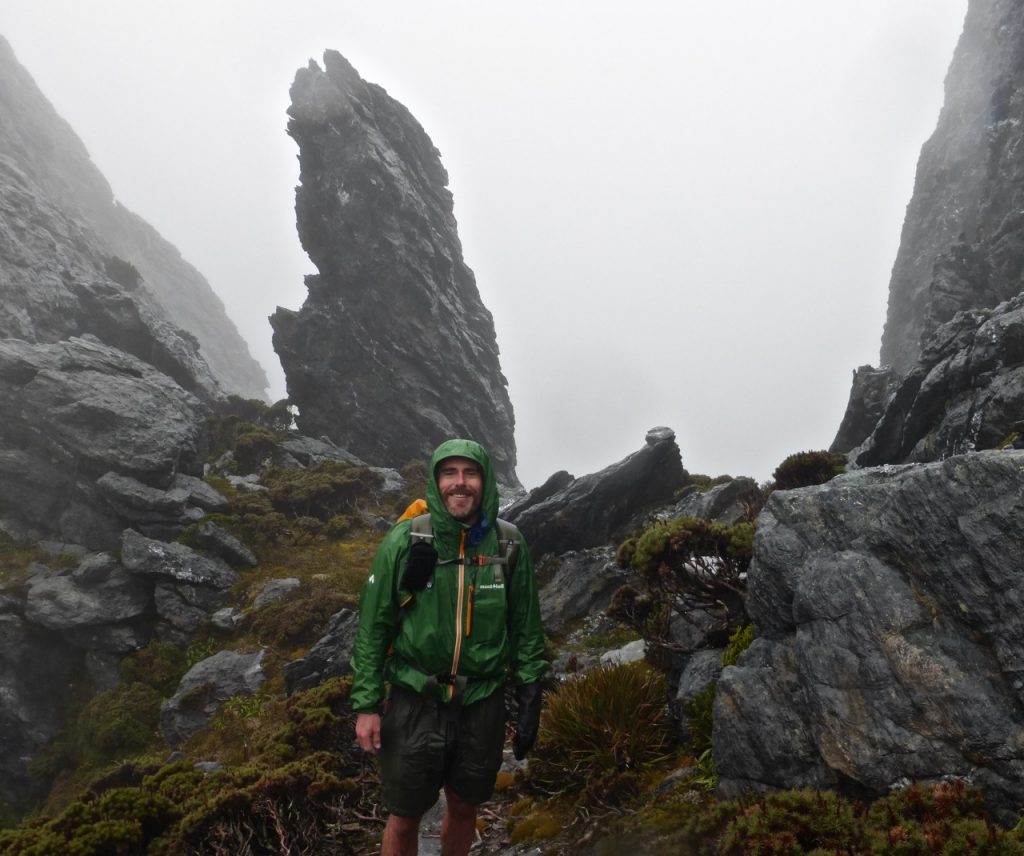“There is no such thing as bad weather, just different types of good weather.”
– John Ruskin (1819-1900)
The validity of the above quotation depends on one thing – your level of preparedness for the conditions you’ll be facing. If you are not prepared, then even the most enlightened, positive thinking of hikers will have a hard time convincing themselves that driving rain, high winds, and 2°C is anything but crappy weather.
Preparedness in the wilderness manifests itself in two principal ways:
- Having the appropriate clothing & equipment for the conditions into which you are venturing.
- Having the knowledge & skills with which to adapt to whatever Mother Nature throws at you.
10 Tips for Inclement Weather Hiking
A combination of driving rain, high winds, and temperatures just above freezing, represents some of the most challenging weather that a hiker can face. In these conditions, hypothermia and frostbite (if the thermometer subsequently drops below 0°C / 32°F) are a very real possibility.
Thankfully, cold-related maladies are far easier to prevent than they are to cure. Here are ten proactive measures that hikers can take when venturing into such environments:
Washington’s Mount Baker Wilderness during a very wet six-day stretch on the Pacific Northwest Trail (2011).
1. Forecast: Always check the forecast before setting out. Adapting is a lot easier if you know what’s coming. This is a good habit to establish irrespective of the climate.
2. Awareness: Watch the weather (forecasts can sometimes be wrong) and know your limitations. If conditions are deteriorating and you’re feeling exhausted, don’t hesitate to set up your shelter and call it a day.
3. Appropriate clothing: If you are hiking in cold, wet and/or windy weather for an extended period of time, it’s not so much a question of staying 100% dry (which is nigh on impossible), as it is maintaining a reasonable level of comfort whilst out on trail. When backpacking in regions such as Tasmania, Scotland, Pacific Northwest, Tierra del Fuego and Fiordland in New Zealand (i.e. cold, wet & windy), my preference is for multiple lighter layers that dry relatively quickly and retain warmth when wet. For example:
- Base layer: 150 or 200 Merino wool long sleeve shirt with zip neck.
- Insulation Layer: Fleece and/or synthetic fiber garments. Long time favourites include the Montbell Thermawrap Jacket & Vest, and the Patagonia R1 Hoody & R2 Fleece Vest.
- Outer Layer: No garment is completely waterproof given extended exposure to the conditions I describe above. Working on the principle that damp is better than soaked and being comfortable rather than dry is the priority, I look for rain jackets with the following features:
a. A good DWR (durable water repellant) finish;
b. Relatively lightweight;
c. Quick-drying;
d. Pit zips for ventilation;
e. Adjustable wrist cuffs and,
f. Fully adjustable hood with a stiff brim.
- Jacket preferences?: Over the past few years I have been happy with both the Integral Designs eVent ThruHiker (no longer in production) and the Montbell Torrent Flier (Gore-tex).
- Lower Body?: I usually take a combination of lightweight/quick drying “waterproof” pants (e.g. Montbell Versalite) and Patagonia Capilene 2 long underwear to wear at night.
4. Avoid sweating: Over-dressing and/or over-exerting can lead to excessive perspiration, which in turn can result in a lowering of body temperature. Constantly monitor yourself and remove or add layers accordingly. Make ‘not sweating’ a priority.
5. Pay Attention to the Extremities: Your head, hands and feet constitute the body’s initial warning system in cold conditions. For trips in such climates, I take a fleece beanie, thin wool gloves, MLD eVent Rain Mitts and merino liner socks. I also carry a third pair of thicker wool socks (always kept dry) to wear at night.
6. Short breaks: The longer you stop the colder you become. When the weather turns nasty, keep breaks short and to a minimum. If for whatever reason you do need to take a longer break, put on an extra layer or two until you begin hiking again.
7. Food & Water: During the day eat high-energy snacks at regular intervals. Before going to bed, your evening meal should emphasize fats and proteins, which are processed slower by your digestive system. Keep a chocolate bar in your sleeping bag, in case you wake up cold and hungry in the middle of the night. (Note: you may want to disregard this last suggestion if you are hiking in bear country outside of winter 😉 ).
In cold and wet conditions, hikers often forget to drink enough water. Big mistake. If you are dehydrated you are more susceptible to hypothermia.
8. Pack Liner: Use a trash compactor bag to line the inside of your backpack. There’s not much point staying comfy during the day, if the rest of your gear (particularly your sleeping bag) is soaked when you arrive at camp.
9. Drying Clothes: During the night, I dry my hiking clothes as best as possible using the following techniques:
- Gloves – I put directly against my head underneath my beanie.
- Wet socks – I place down my long johns.
- Hiking shirt – I will either wear over the top of a thin merino wool t-shirt or fleece, or alternatively, place it between my sleeping mat and the shelter floor.
- Note: I usually avoid putting wet items directly against my sleeping bag/quilt, as the moisture can compromise the bag’s insulation.
10. Attitude: Once you have the gear and experience required to hike safely in cold and wet conditions, the key is to maintain a positive outlook by any means necessary………….




